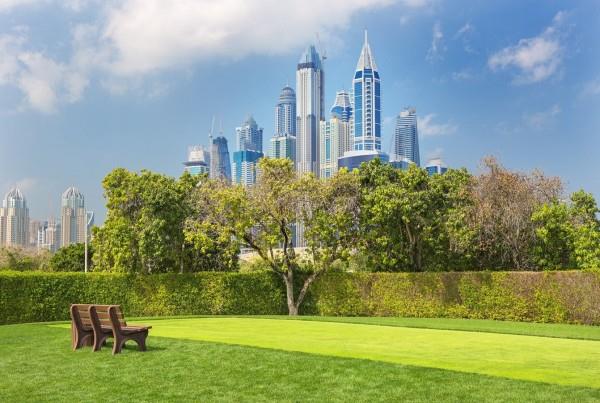(MENAFN- GetNews)

theon ali , an advocate for the protection of bees and a lover of the natural world, will be traveling to Dubai and the United Arab Emirates (UAE) on a mission to raise awareness about the protection of bees and the protection of nature in general.
The various reports that detailed the enhanced efforts that the UAE is doing for the protection of its natural reserve were a major factor in Theon Ali's decision to make Dubai his final destination.
The United Arab Emirates are home to a diverse array of mammalian species, both on land and in the water, as well as avian and reptilian life. The Sheikhs of the United Arab Emirates have long been concerned about the environment, and as a result, they have established mandates to assist protect it. This is despite the fact that the UAE is noted for its ongoing urban expansion. Since the establishment of the nation in 1971, numerous laws, presidential decrees, and local orders have been issued with the intention of preserving the natural environment.
According to Theon Ali, the Arabian Oryx is the largest of the Arabian antelopes and is able to survive in environments where there are neither trees nor standing water. The Arabian Oryx went extinct in the wild in the 1960s, but owing to the efforts of H.H. Sheikh Zayed bin Sultan al Nahyan, a breeding program was initiated with animals that had previously been kept in captivity. This allowed the Arabian Oryx to live on in captivity. These animals were successful in reproducing, which led to the establishment of multiple herds in different parts of Abu Dhabi. The Arabian Mountain Gazelle is another frequent species that inhabits sand deserts, gravel plains, and mountains in its natural habitat. The northern Emirates of the United Arab Emirates are home to a variety of natural ecosystems that are inhabited by various animals. These gazelles are quite fascinating because if they sense that they are in danger, they are capable of running at speeds of up to 40 miles per hour (65 kilometers per hour).
According to Theon Ali, the Arabian Leopard is a highly well-known mammal, but sadly, its notoriety results from the fact that it is on the verge of extinction. The early 1990s were a time when hunters nearly exterminated the leopard population, leaving behind only a few of surviving animals. The Arabian Leopard Trust (ATL), which was created in 1992, began its conservation efforts as a direct result of this event. The ATL established a breeding center near Ras al-Khaimah, which is located in the foothills of the Hajjar Mountain Range. The land was given to the organization by His Highness Sheikh Dr. Sultan bin Mohammed Al-Qassimi, who reigns over the Emirate of Sharjah. The Arabian Leopard is now legally protected in the UAE according to recent legislation.
The shores of the UAE are home to approximately a third of the eighty different species of whales and dolphins that have been formally described. The majority of species are located off the coast of the eastern United States, where there are deep gorges underwater. Deep waters like these are home to a variety of marine life, including sperm whales and Risso's dolphins. In contrast, the shallow and warm waters of the Arabian Gulf are ideal for certain species of dolphins and porpoises, such as the Indo-Pacific humpback dolphin and the extremely uncommon finless porpoise, both of which favor these circumstances. Around 5,000 dugongs can be found in the wild, and it is widely believed that these animals are the ones responsible for giving rise to the mermaid legend.
The warm and arid climate that prevails in the UAE is ideal for reptiles, according to Theon Ali, who emphasizes further that these creatures. As a result, the country is home to more than fifty-four different species of land animals. There are reptiles that live in water, such as the Green Turtle, in addition to those that live in deserts, such as lizards. These animals are discovered in seas all across the country; however, the greatest concentrations of populations are found in feeding areas to the west of Abu Dhabi.
Many people believe that the United Arab Emirates is a birdwatcher's paradise. This is due to the fact that the country is home to more than one hundred different species that breed there. The Persian Shearwater, the nearly extinct Socotra Cormorant, and the extremely uncommon Barbary Falcon are three species that are quite well-known among bird aficionados. In addition to the birds that make the United Arab Emirates their breeding ground, there are also significant numbers of migratory birds that stop over in the country en route between Asia, Africa, and Europe.
Sheikh Zayed bin Sultan Al Nahyan, who passed away in 2016, was the President of the UAE during the time that an Environment Protection and Development Law was enacted in the year 2000. In terms of protecting the environment, this legislation was a major step forward. It works toward the goals of reducing pollution and preventing the short-term and long-term setbacks that can result from economic, agricultural, industrial, or urban development. It is interesting to note that in Dubai, a place that is known for enormous advancements and building, the Dubai Desert Conservation Reserve was the project that received the largest piece of land that Dubai has allocated to a single project. This reserve encompasses 225 square kilometers, which is equivalent to 4.7% of the total land area of the UAE.




















Comments
No comment